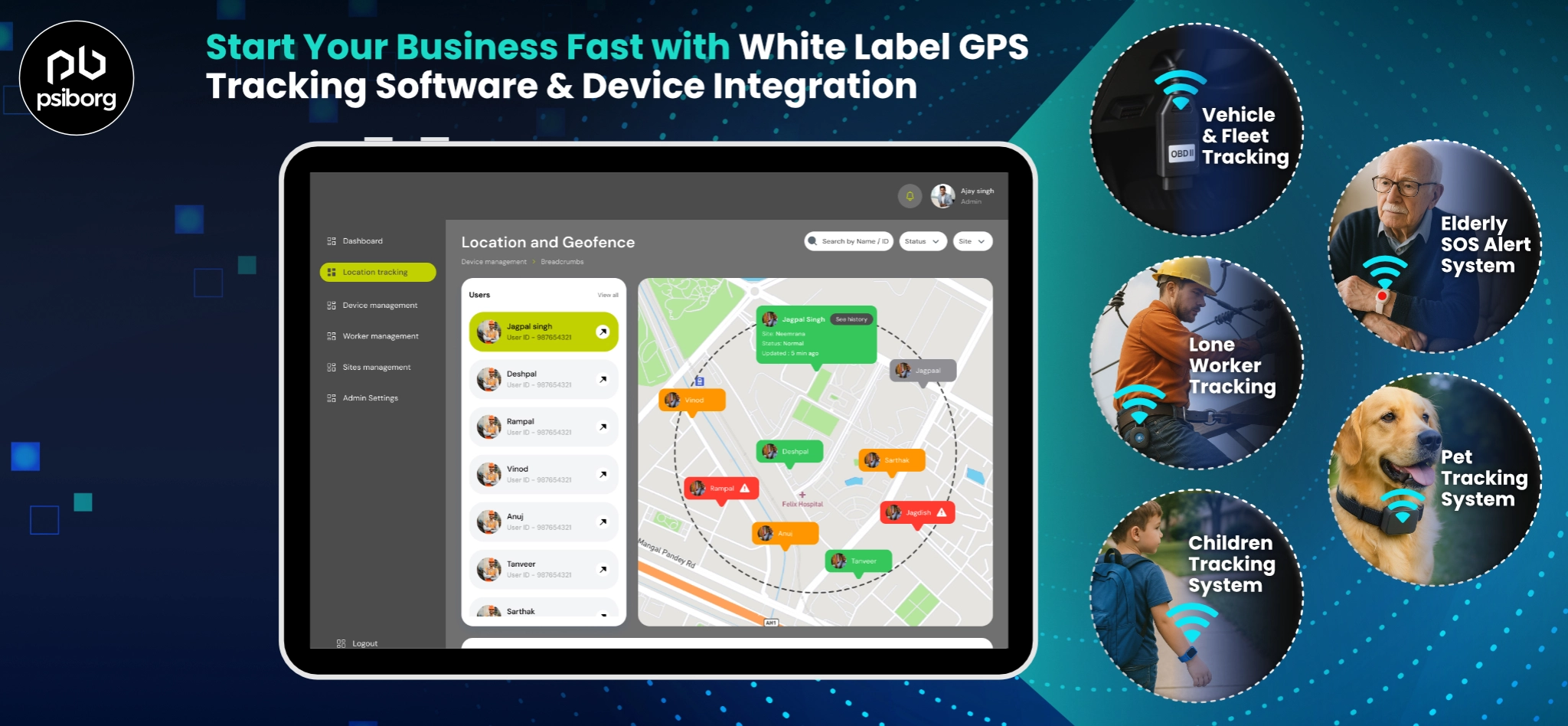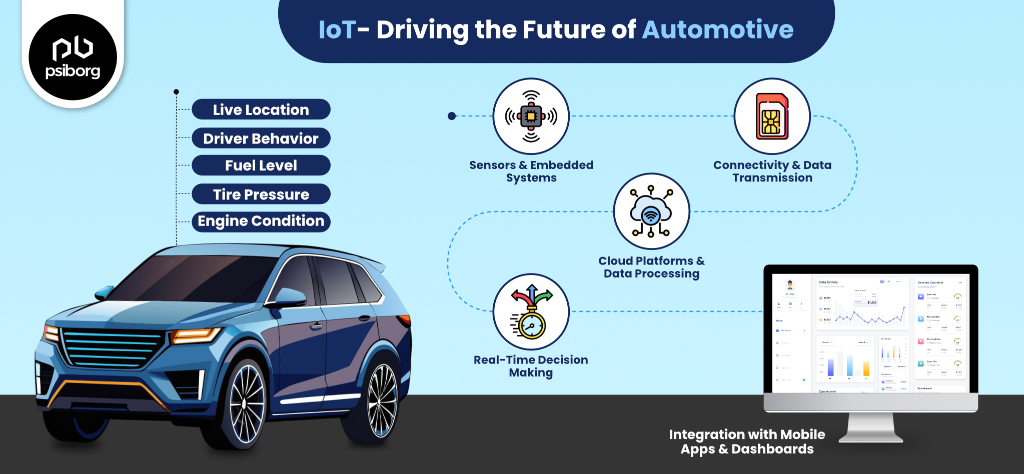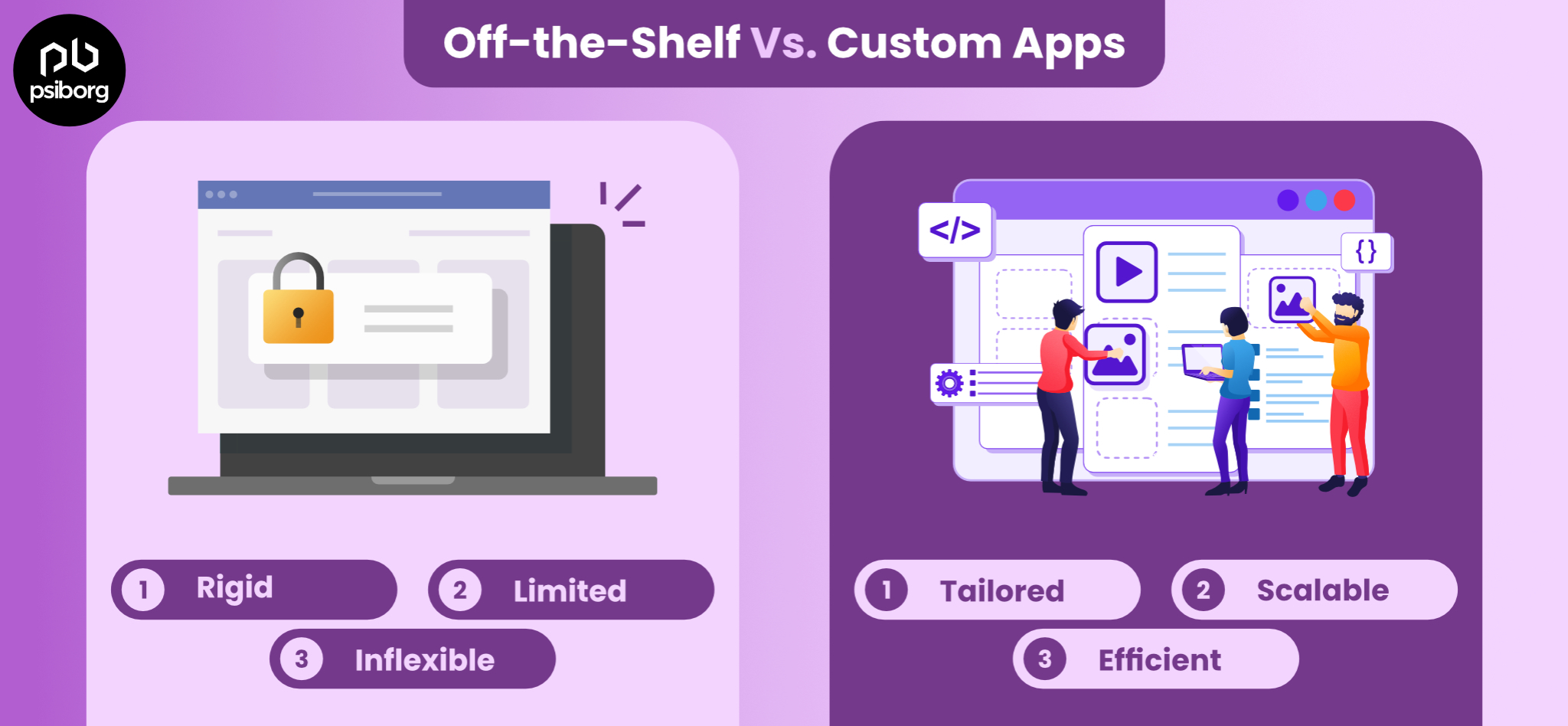Water level monitoring system using IoT is designed and developed to efficiently manage and monitor water usage and its wastage.
Nevertheless, water has been and will always be an essential resource for all lives on the planet. Generally, this importance of water is felt more during the scorching summers when the water reservoirs face water shortages.
For decades, we as a community have implemented water management ways to save water by efficiently using it.
However, when a traditional system starts failing, you also have to take a smarter approach. Here, one smarter approach to saving water is integrating a water level monitoring system using IoT into the current operations.
Now you might be thinking about how an IoT-based water level monitoring system can solve several water-related issues.
(Read along to get your answer)
To explain in a short and sweet way, a water level monitoring system using IoT is actually a water wastage control management and monitoring solution.
This above mentioned smart water level monitoring system is an all-rounder solution that can be utilized in almost every industry to manage and control water wastage.
Let’s jump into a detailed explanation of how a water level monitoring system using IoT works and why it’s beneficial.
About Water Level Monitoring System Using IoT
An IoT-based water level monitoring system is an advanced, automated, and highly scalable solution that monitors the volume of water filled in tanks in real-time. And since it is an automated system, it will also save human energy and time.
But why using IoT?
Because IoT offers societal benefits and so it’s the future.
In this smart system, the water tank consists of sensors that detect the water level. Further, a microcontroller reads this sensor data and sends the information to the cloud thus allowing it to operate the system from anywhere.
Also, the water level control system is a full-fledged solution with flexible features that can be customized for all use cases.
Not to mention, the adoption of IoT technology in the water industry will increase overall productivity, which will be a bold step forward.
Let’s understand the importance of a smart water level monitoring system through its applications.
Sector-Wise Applications of Smart Water Level Monitoring
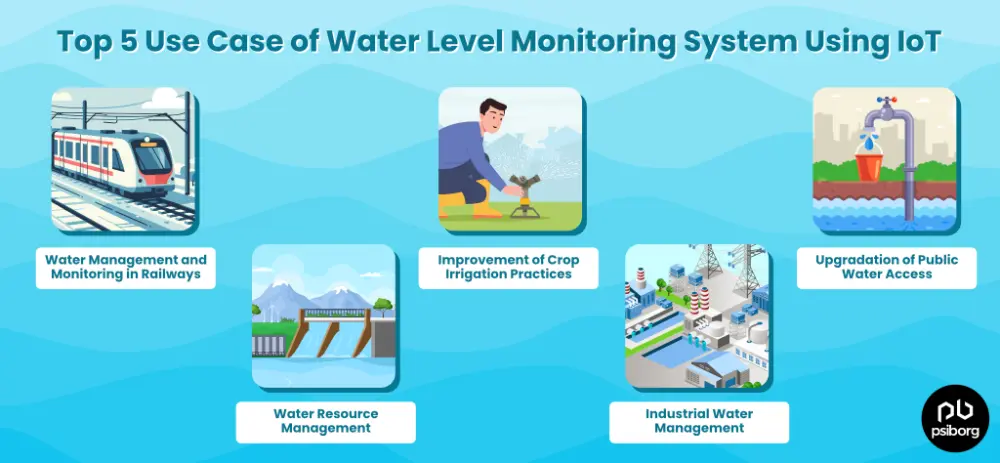
A remote water level monitoring system has versatile applications across various industries.
It is because of its ability to provide real-time data and automate responses to changing water levels.
Some of the sector-wise prime applications of water level monitoring systems are:
1. Water Management And Monitoring in Railways
The use of IoT in railways is nothing new. In the same way, the integration of an IoT-based water level monitoring system into railways will provide a ubiquitous supervision system for monitoring and controlling water usage.
Railways are considered the backbone of transportation in India. A lot of water is required for the passengers on the running train, but also, tonnes of water are wasted at railway stations during the refilling process of the water tanks.
With the help of the water level monitoring system, the managing team will be able to analyze how much water is needed and consumed by passengers in railway bogies each day. This data analysis will help in proper water management.
So, the system will continuously monitor the trains, and if a train is detected with a lower water threshold then first priority will be given to that train to fill up the water.
Also, if the train is running out of water, the system will send an alert to the upcoming station regarding how much water is required and to which bogie has the lowest water threshold. This will help manage the situation smartly and quickly, as the platform authorities will be ready with the required water.
However, due to some unfavorable circumstances, if they cannot meet water requirements, then the system will automatically pass this information to the nearest station.
2. Improvement of Crop Irrigation Practices
Water is very essential for smart agricultural practices. Supplying water to the crops ensures proper crop irrigation. Here, the water level monitoring system will allow farmers to fulfill the needed water supply and make sure that the irrigation tank is adequately supplied with water.
Furthermore, water level monitoring sensors, along with soil moisture sensors will assist farmers in following precise target irrigation based on the moisture level data.
In addition, farms near the river can use the water level monitoring system to obtain real-time data that farmers can use to take preventive measures to protect their crops from flooding by making timely adjustments to irrigation schedules or by building temporary barriers.
3. Upgradation of Public Water Access
Municipal water supply is a public utility run by the government. They are responsible for providing water supplies to the citizens.
A water level monitoring system is used by the municipal water supply corporation to track the optimal water level in water tanks and reservoirs, preventing both overflow and underflow situations.
This helps maintain a constant water supply for the community.
Moreover, the water level monitoring system also monitors water pressure and flow rates throughout the service area to detect any leaks in the water distribution system. These smart water level monitoring systems can also be integrated with smart water meters to give detailed water consumption data to municipal authorities.
4. Water Resource Management
Water management practices are done to ensure the sustainable use of water resources.
Getting near real-time information on water levels in reservoirs, rivers, and other water bodies, allows making informed decisions regarding water allocation during drought or flood-like conditions.
Moreover, monitoring water levels in canals and pipelines will also help in detecting leaks and blockages. So, predictive maintenance can be done to prevent water loss and ensure proper water flow throughout the system.
In addition to this, by tracking water levels over time, the system can monitor potential water level scarcity so that measures can be taken for water conservation.
5. Industrial Water Management
Several industries, like manufacturing or chemicals, need to maintain specific water levels in tanks and reactors.
Here, an IoT-based water level monitoring system monitors the fluid level for better production efficiency. It also prevents overflow that might damage or contaminate the surrounding equipment.
Moreover, it is also one of the use cases of IoT in manufacturing industry, where water is used in various levels and processes, and wastewater needs to be treated before disposal.
Also, monitoring the water level in the water treatment plant will improve the water treatment process by ensuring proper flow through filters and setting tanks.
These are a few use cases of water level monitoring systems across industries. Apart from these applications, the smart water level monitoring system is also utilized in flood monitoring, groundwater level monitoring, wetland studies, and tidal studies.
Benefits of Water Level Monitoring System Using IoT
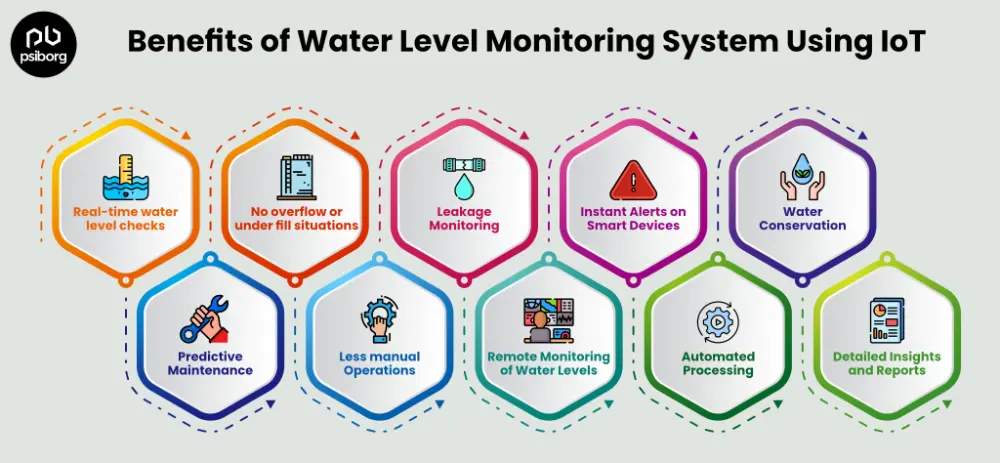
The benefits of integrating a smart water level monitoring system into business processes are:
- Real-time water level checks
- No overflow or underfill situations
- Water and gas leakage detection
- Instant alerts on smart devices
- Water conservation
- Predictive maintenance
- Less manual operations
- Remote monitoring of water levels
- Automated processing
- Detailed insights and reports
Final Thoughts,
Utilizing an IoT-based water level monitoring system can be a game-changer for businesses across all sectors. Water shortages and water management are the biggest issues that this aforementioned smart system solves.
Nevertheless, PsiBorg Technologies provides IoT product development services. We have expertise in developing custom IoT solutions like water quality monitoring systems and water level monitoring systems.
Thus, if your business needs any of these smart IoT solutions, then contact us with your requirements.
FAQs
An IoT-based water level monitoring system provides automatic detection of fluid levels in different types of tanks and storage containers. The aforementioned system measures water levels through ultrasonic sensors and transmits the data wirelessly to the cloud, where it is accessed and analyzed in real-time.
The working principle of the water level monitoring system using IoT is very simple. Typically, it involves using sensors to detect water levels and converting this data into electrical signals. These signals are processed and transmitted to a central system or display, allowing for real-time monitoring and management of water levels in various applications.
Generally, ultrasonic sensors are used to monitor water levels. These aforementioned sensors measure the distance between the sensor and the water surface by emitting ultrasonic waves and calculating the time it takes for the waves to reflect back.
A water level monitoring system is needed to prevent overflows and shortages, ensure efficient water usage, detect leaks early, support resource management, and reduce maintenance costs.
However, a water level monitoring system using IoT has wide use cases, such as:
- Water level monitoring in rivers and lakes
- Water level measurement in water tanks
- Flood Monitoring
- Sewage pump level control
- Oil level measurement for oil trucks and storage vessels



